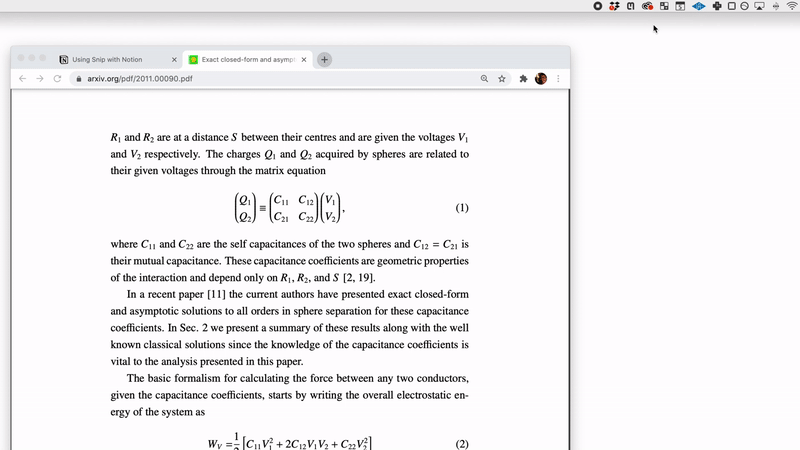How to take Math/Statistics notes in Notion?
1 Motivation
1.1 Why take digital mathematical notes?
- Quickly find the definition, property or an example for any specific topic from this course.
- Always see the structure of the lecture content.
- Access it everywhere.
- Write homework with latex faster since the notes are already built with latex.
1.2 Difficulty and the solution
- Difficulty: Hard to write mathematical formulas quickly
- The greatest difficulty which has kept students from taking mathematical notes online is the difficulty of typing the formula on a digital document.
- Usually, it’s way faster to write a mathematical formula by hand than typing a formula in word or latex.
- Solution: Use Mathpix and
block/inline equation
We can use Mathpix to take a screenshot for the equation and paste it to Notion as a block equation or inline equation

If you want to take notes from a book, we can even copy and paste the whole paragraph.

💡 There’s still a problem in Notion: it uses “$$” instead of “$” to trigger the math equation, which sometimes make it really tired to copy the inline math to Notion. This is my No.1 request for Notion to fix!
2 How to make efficient lecture note?
Here I share a template built from my notes taken from the class Advanced Probability and Inference I. Let’s take it as an example and give some tips. (These tips come from my experience of taking Notion notes from over 10 Statistics classes. Hope they will help!)
2.1 Use toggle heading and create a table of content
Using the toggle heading for each big topic will generate a link in the table of content, which make it easy to access each part of the notes.
Template display

Create toggle heading

Create table of content

2.2 Create a toggle list for each small topic
These small topics give you an outline of this big topic. Also, you can use this toggle list to test yourself!

2.3 Try to make numbered list or bullet list inside each topic
For the definitions or the properties of each term, it would be helpful to memorize if we number each condition.

2.4 Attach examples or proofs in toggle list
Examples help us to understand the concept, proofs are essential for us to learn the theorem, but we don’t want them to distract us from seeing the whole picture.
The toggle list is really good at hiding something that we don’t want to see now but want to see whenever we want later.


2.5 Don’t make the structure too complicated
Sometimes we may want our structure to characterize the whole topic perfectly, but building too many sub-toggle lists may stop us from reading the content inside quickly.
Usually, three layers of the toggle list suffice; two layers will be better.

2.6 Use sync block
We may find out some definitions or content are related across the topics. In Notion, we can use the synced block to build the connections instead of directly copy-paste.

In a more practical situation, I usually forget the definition or property when looking at the example. It is also helpful to paste a sync block about the definition inside the specific example block.
3 What’s More?
There are still many good things about using Notion, and please forgive my poor English for not writing them all down.
Another good thing I haven’t mentioned much is collaboration. Notion now has an excellent commenting experience, which helps a lot for collaborative work. You can even type inline math equations in the comments! I may share about this next time.